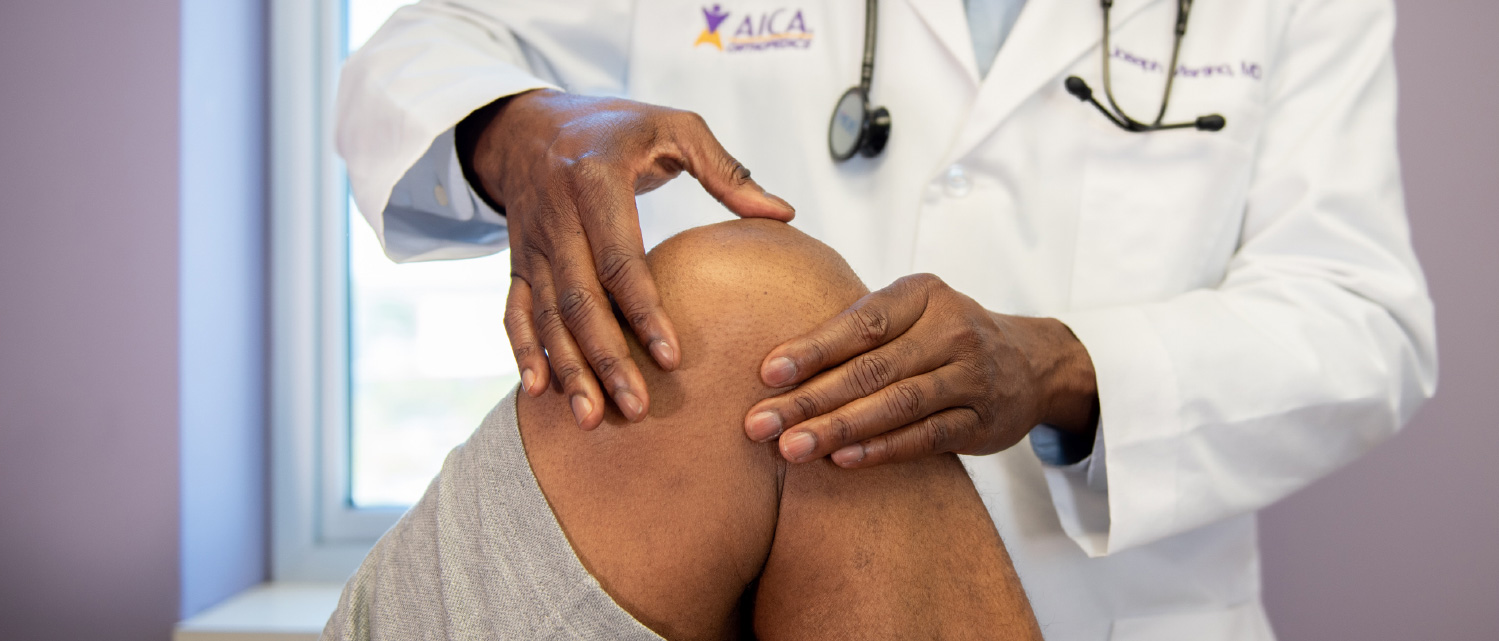
Posterior Shoulder Dislocation
AICA Orthopedics
Posterior Shoulder Dislocation
can occur in a context of which direction the upper arm bone moves when it is forced out of the shoulder socket. In the case of a posterior shoulder dislocation, the humerus has been moved toward the back of the body, per the word “posterior.” These types of shoulder dislocations are considerably rarer than anterior shoulder dislocations. This is probably due to the fact that the reasons one might sustain such an injury are less commonplace circumstances, or they are experienced by fewer people overall. For example, posterior shoulder dislocations are most commonly suffered by men between their 30s and 50s. This is most likely because posterior shoulder dislocations occur often in the aftermath of traumatic incidents.
Sin gastos de bolsillo
Transporte disponible
Médicos disponibles 24/7
Todas las imágenes internas
Cita el mismo día
Se aceptan la mayoría de los seguros
Se Habla Espańol
What Causes Posterior Shoulder Dislocations?
As mentioned above, the causes of posterior dislocations are much narrower in scope, which causes them to happen less frequently. Some situations that unfortunately cause individuals to sustain posterior dislocations in their shoulders are resulting from seizures, trauma to the shoulder area, and in unique cases, when an electrocution occurs. When a person seizes, their body may convulse violently, causing the posterior shoulder dislocation to occur when the humerus moves as a result of the muscles in the shoulder contracting improperly. Trauma-related dislocations are most commonly caused by an individual suffering a fall while their arm is outstretched. In terms of people groups, this type of scenario is the sort that more men find themselves in than women and children or the elderly.
Symptoms of Posterior Shoulder Dislocations
Pain
Pain in the shoulder area or pain in other areas that have sustained injury in a trauma might be strong indicators of a posterior shoulder dislocation, particularly when the context of the trauma suggests it as well. Pain can sometimes be an equally unhelpful tool in diagnosing a posterior dislocation because the events that typically surround this sort of injury can also mask pain-adrenaline, drugs, and seizure-related pain.
Loss of Mobility in the Shoulder
Chronic pain sufferers who have suffered a shoulder dislocation will often present with more complaints of immobility of the shoulder, as opposed to pain, because the pain of dislocation can be difficult to discern from their typical pain level. Many common tasks will become difficult and even impossible for those who have sustained a posterior shoulder dislocation.
It is important to note that posterior shoulder dislocations are often undiagnosed or improperly diagnosed. There can be many reasons for this to be the case, chief among them being the fact that many physicians leap to other conclusions first and proceed to treat their first inclination. Given the rarity of this sort of injury, an orthopedic doctor might consider it an improbable injury and overlook its telltale signs.
How Are Posterior Shoulder Dislocations Treated?

What Sort of Rehabilitation Is Involved in Posterior Shoulder Dislocations?
As in the case of any shoulder or general joint injury, it is important that the patient observes a rehabilitation plan in order to maintain the health and vitality of the shoulder joint. Your doctor may recommend certain exercises for you to try out regularly, which will help to support the healing process and maintain the stability of the shoulder. The shoulder joint is prone to instability, so any assistance we can provide our shoulders with will decrease the likelihood that suffering a second dislocation will occur. Often, physicians also recommend immobilization, or rest of the shoulder for a period of time they will determine, in order to prevent any further injury as the shoulder attempts to regain its full mobility and strength. Your physician might also suggest that you adjust various aspects of your daily routines or posture that would inhibit the healing process or further exacerbate the fragile joint. If you work to maintain the stability of your shoulder joint, you should experience full restoration of your mobility and reduction of your pain issues.











